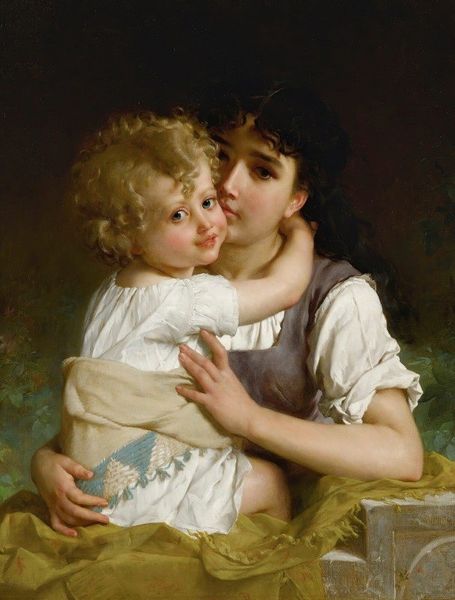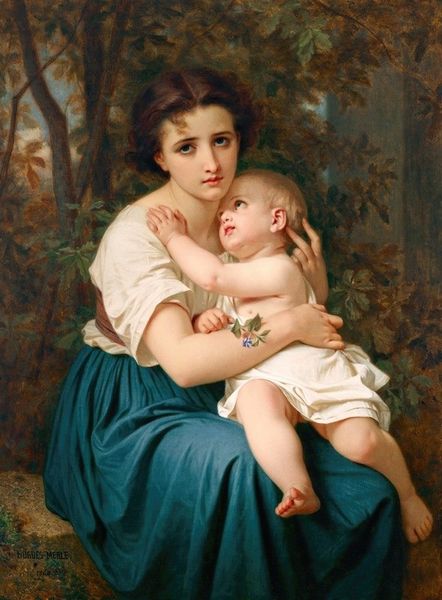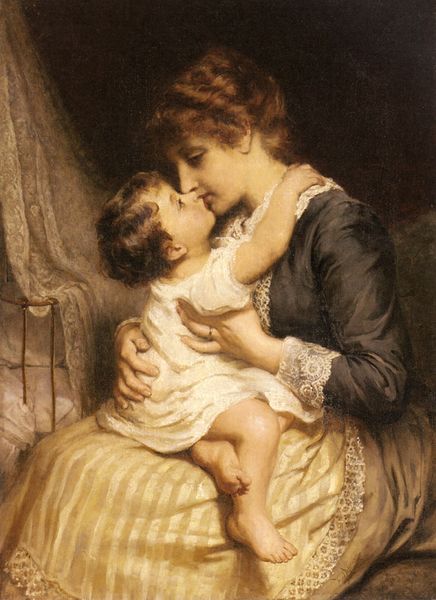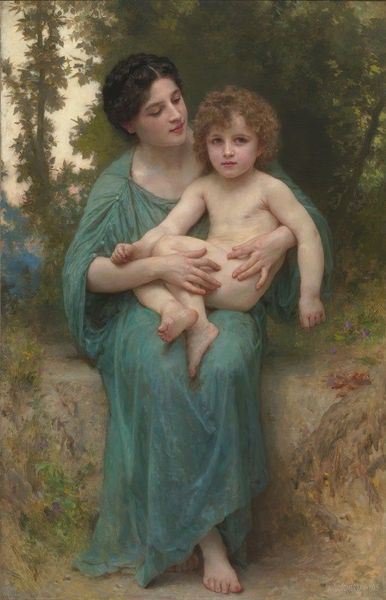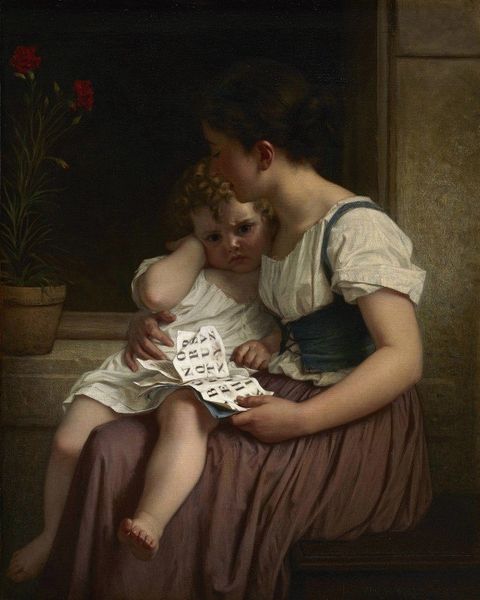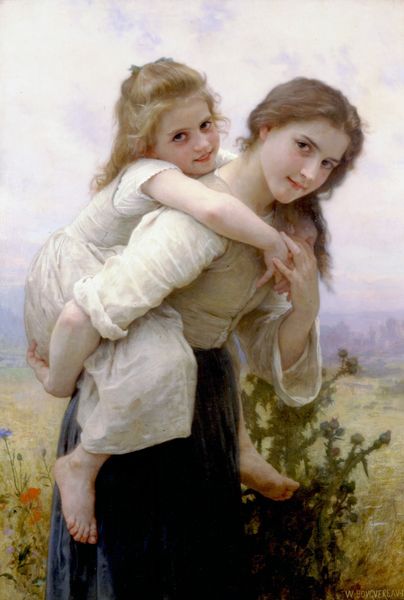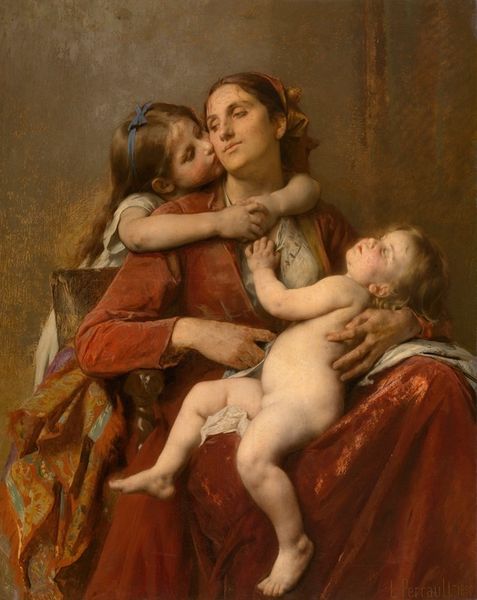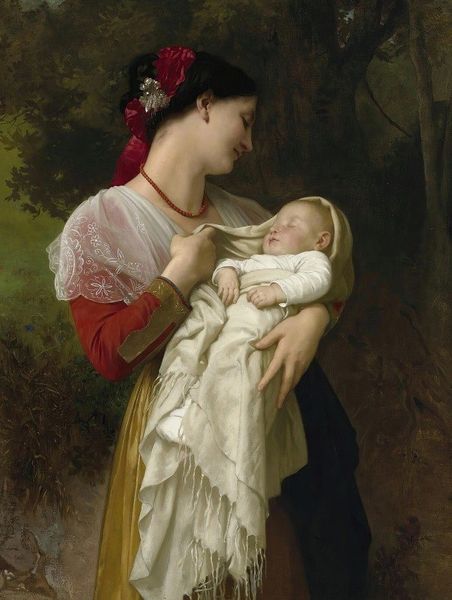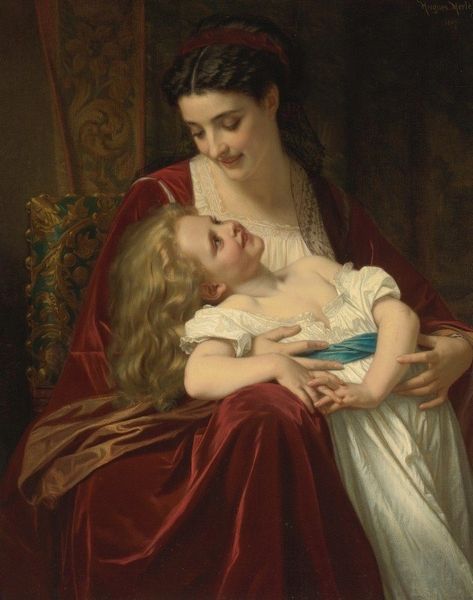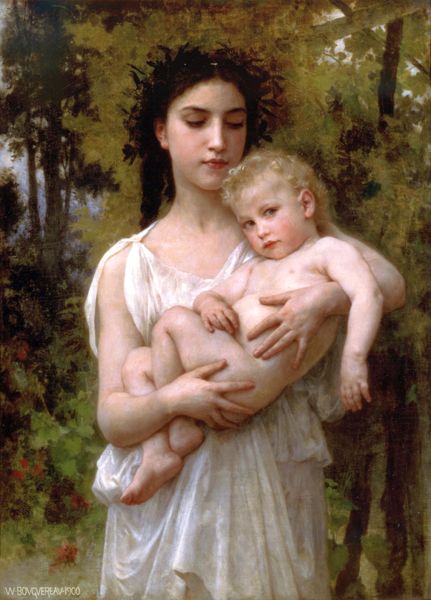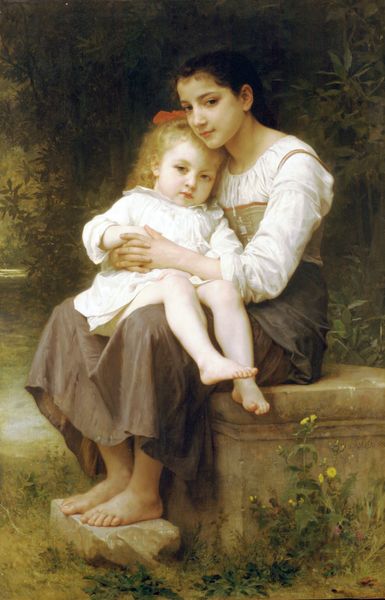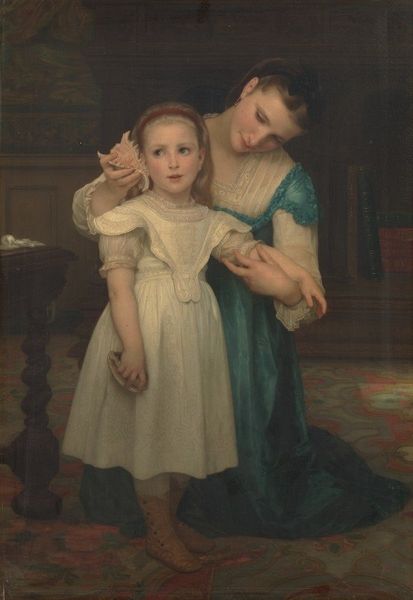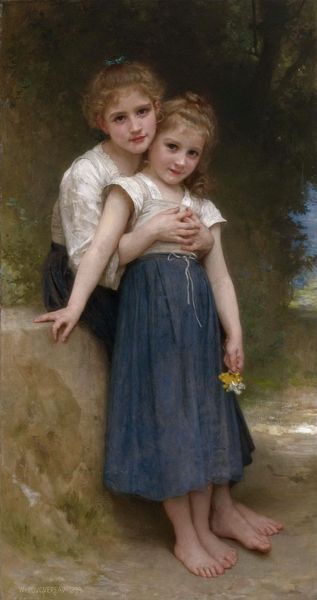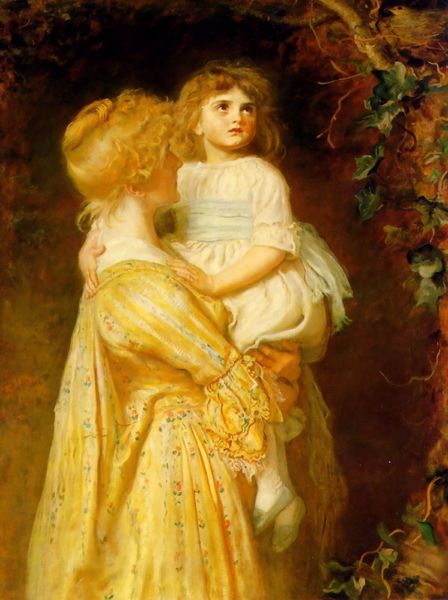
Copyright: Public Domain: Artvee
Émile Munier painted this scene of a mother and child, A Tender Embrace, in France. This tender depiction of motherhood connects to the broader social context of 19th-century Europe, where the idealization of domesticity and family values was on the rise. The image creates meaning through its visual codes, such as the soft lighting, gentle colors, and harmonious composition, all of which evoke a sense of warmth and intimacy. During the time it was made, France experienced significant social changes, including industrialization, urbanization, and shifting gender roles. This work can be understood as a celebration of traditional family values in the face of modernity. By examining period sources like etiquette manuals, advice columns, and art criticism, we can further understand the social and cultural significance of this work and its role in shaping and reflecting prevailing attitudes toward women, family, and domestic life.
Comments
No comments
Be the first to comment and join the conversation on the ultimate creative platform.
